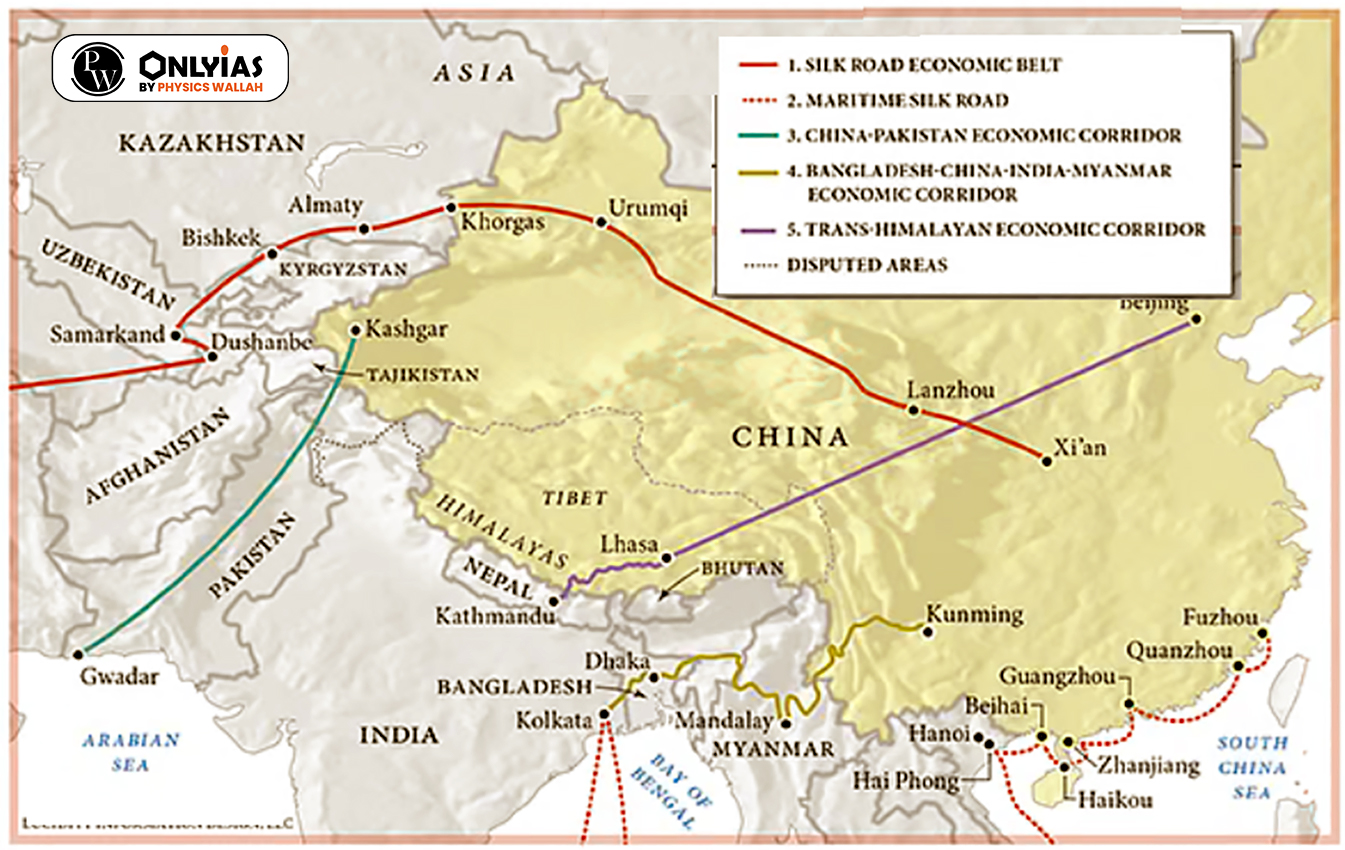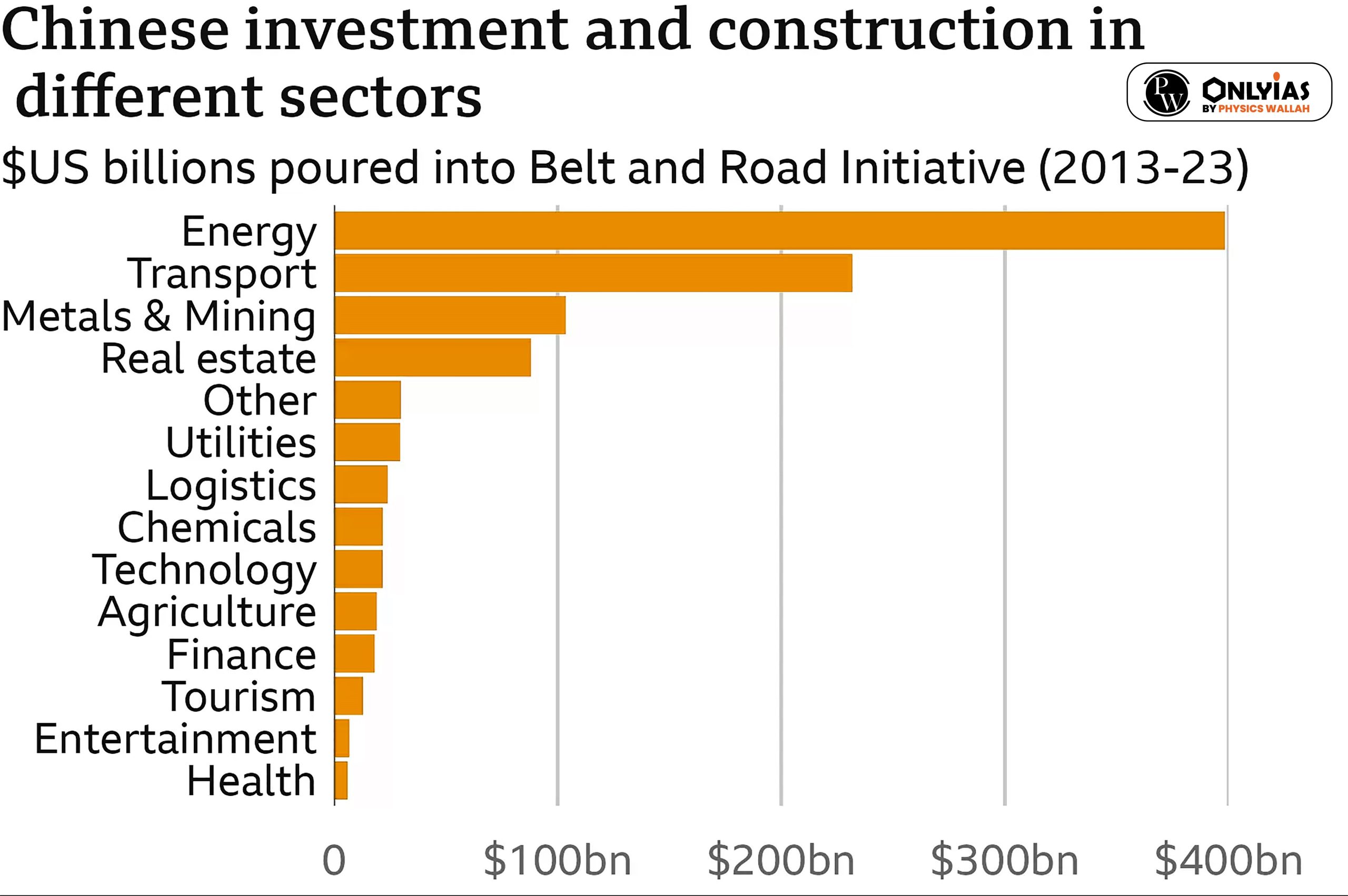Context:
- Leaders and officials gathered in Beijing to celebrate the 10th anniversary of the Belt and Road Initiative (BRI).
- For the third consecutive time, India is set to boycott a summit of China’s Belt and Road Initiative.
What is the BRI?
- Called “One Belt, One Road” in Chinese, the Belt and Road Initiative started as a program for Chinese companies to build transportation, energy and other infrastructure overseas funded by Chinese development bank loans.
- Goal: It was launched in 2013 to boost trade and the global economy by enhancing China’s connectivity with other regions, resembling a modern Silk Road linking China to the Middle East and Europe.
- Investments: Estimated $1 trillion
- Participating Countries: A total of 152 countries have signed a BRI agreement with China, though Italy, the only western European country to do so, is expected to drop out.

| “Belt” refers to overland routes connecting China to Europe through Central Asia, as well as to South Asia and South East Asia; while “Road” denotes a maritime network linking China to major ports through Asia to Africa and Europe. |
What are the challenges of China’s Belt and Road Initiative?
- Debt Trap Diplomacy: Nations have borrowed heavily from China for BRI projects, and they now face challenges in repaying these loans. This has led to accusations of “debt trap diplomacy,” where countries risk losing control of strategic assets if they default on their loans.
- For example, Sri Lanka had to hand over control of the Hambantota port to China due to mounting debt.

India’s Stand
- India strongly opposes China’s BRI project, particularly the China-Pakistan Economic Corridor (CPEC), because it passes through Pakistan-occupied Kashmir (PoK).
- India’s main concern is that this project disregards its sovereignty and territorial integrity.
News Source: Economic Times
| Prelims Question (2016)
‘Belt and Road Initiative’ is sometimes mentioned in the news in the context of the affairs of
(a) African Union
(b) Brazil
(c) European Union
(d) China
Ans: (d) |
![]() 17 Oct 2023
17 Oct 2023

